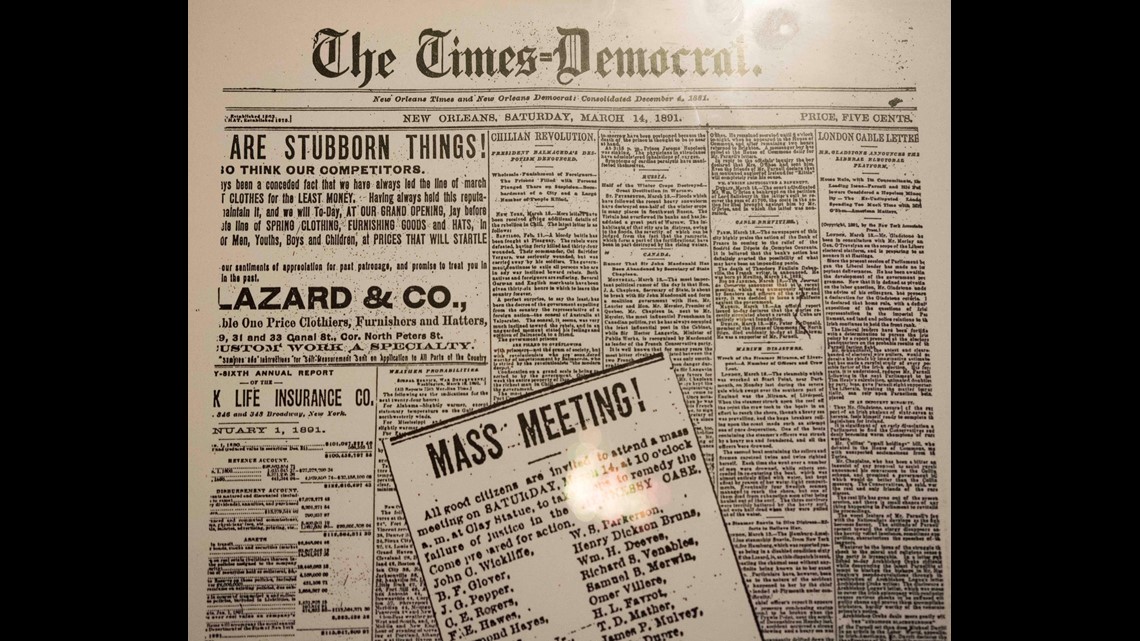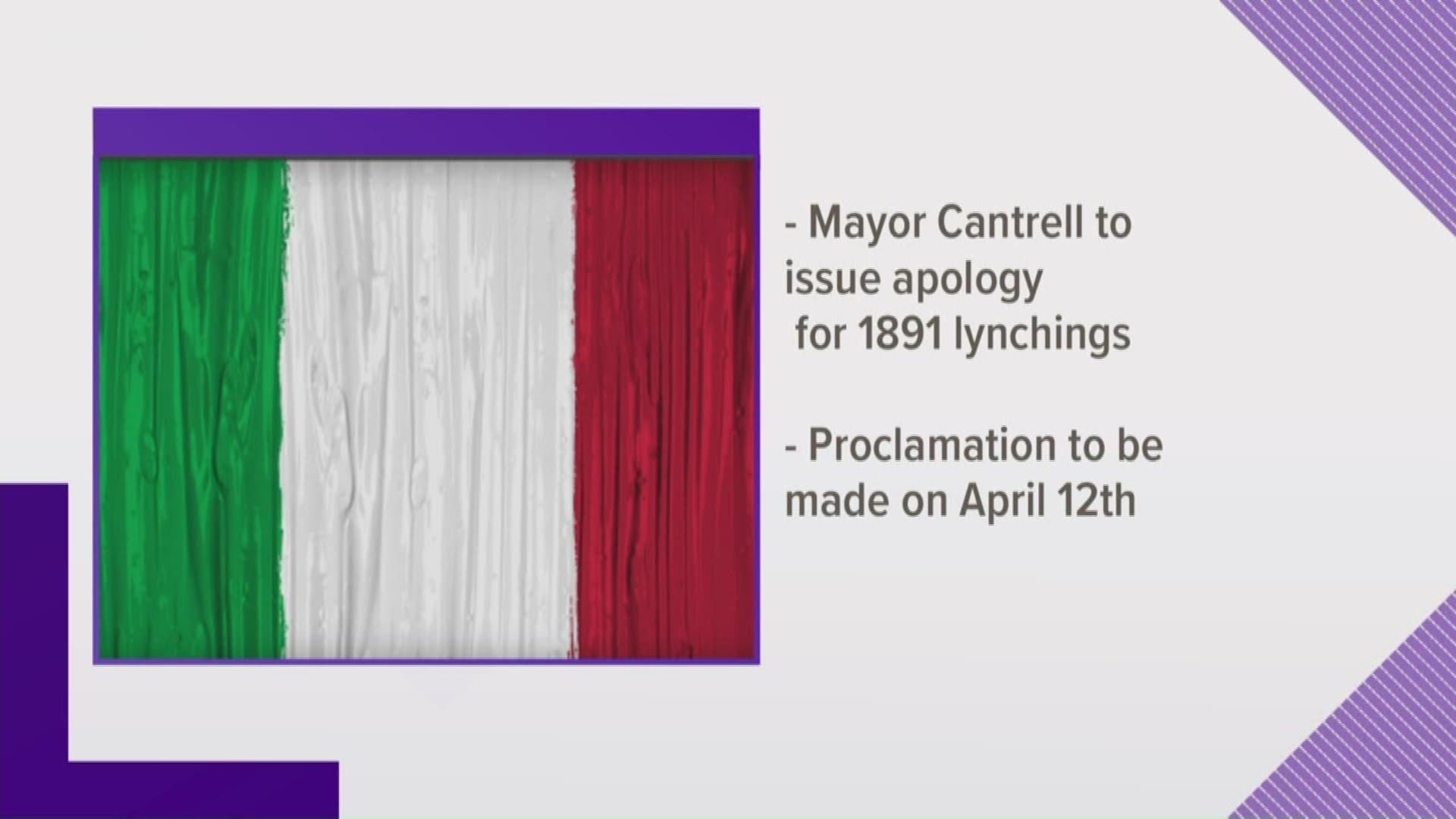NEW ORLEANS (AP) — The mayor of New Orleans plans an apology to Italian Americans for what's considered the nation's most deadly lynching — violence in which 11 Italian immigrants were killed after acquittals in a police chief's murder.
"This has been a longstanding wound," said Michael Santo of the Order Sons and Daughters of Italy. The lynching in 1891 and responses to it prompted Italy to close its embassy in the U.S., followed by a reciprocal U.S. Embassy closing in Italy, he said.
Santo said that when the city was asked earlier this year for an apology, Mayor LaToya Cantrell embraced the idea, appointing Human Relations Commission head Vincenzo Pasquantonio as liaison.
"Our office has worked with the Italian-American community on this issue and will be releasing a proclamation" April 12, said a statement emailed by mayoral spokesman Joseph Caruso.


The proclamation will be presented at the city's American Italian Cultural Center, organizers said.
Correspondence among Italian, U.S., and state officials shows that the lynching "occurred with the connivance of the New Orleans local authorities," Patricia Fama Stahle wrote in a 2016 book .
The police chief in question, Commissioner David Hennessy, was ambushed late Oct. 15, 1890, by four men near his home. He died, reportedly blaming Italians.
About 30,000 Italian immigrants lived in New Orleans and hundreds were arrested during the investigation that followed, Stehle wrote. Nineteen were indicted, and nine of them were tried — a trial that ended with six acquittals and jurors unable to agree in three cases.
Anti-Italian prejudice had been growing since the 1860s, when Sicilians began immigrating in large numbers, said Dr. Joseph V. Scelsa, president of the Italian American Museum in New York and sociology professor emeritus at City University of New York. Though many originally came to work on plantations, they quickly organized businesses of their own, such as working on docks or importing fruits and vegetables from South America, he said.
At least three of those tried in New Orleans had been in trouble with the law in Italy and another was a known Mafioso, according to Stahle, but at least five had clean records. Eight of those killed were U.S. citizens, three were Italian citizens.
The trial began in mid-February 1891, with the verdict reached March 13, 1891. A "Vigilance Committee" met that night and took out ads in morning newspapers calling for a March 14 meeting of people "prepared for action," according to a 1991 article in The Times-Picayune of New Orleans.
It said thousands of people gathered around a statue of Henry Clay and heard William S. Parkerson say, "When the law is powerless, rights delegated by the people are relegated back to the people, and they are justified in doing that which the courts have failed to do."
The mob stormed the jail. Jailers opened cell doors and told the men to run, but nine were chased down and shot. Two others were hanged, according to the article. Of the 11 dead, three had been acquitted, the jury was hung on three others, and the remaining five had been indicted but not tried, Charles Marsala, who is working on a documentary about Sicilian immigration to New Orleans, said in an email.
He said another eight — including the acquitted 14-year-old son of an acquitted but lynched fruit peddler — managed to hide and escape the mob.
In 1892, the US government paid $25,000 in reparations to victims' families.
It "was a horrific act of collective violence inspired by ethnic prejudice, and it has a claim to constituting the largest mass lynching in US history, but it was hardly the largest act of collective violence in US history or even Louisiana history," Michael J. Pfeifer , author of books about lynching and its roots in the United States, wrote in an email.
"Most lynching incidents were somewhat targeted and rarely involved more than several victims," he wrote, while massacres and race riots killed far more people at a time.
In Louisiana, an estimated 200 to 250 people were killed during two weeks of violence in Opelousas in 1868; 60 to 150 were killed in Colfax in 1873, and 30 to 60 in Thibodaux in 1887. At least 200 African-American men, women and children were killed in 1919 in Elaine, Arkansas.
"It is also worth noting that at least several thousand African-Americans and more than 400 black Louisianans were lynched in the late 19th and early 20th centuries, while several dozen Italians were lynched (Italians were also lynched in north Louisiana & Colorado)," Pfeifer wrote.

